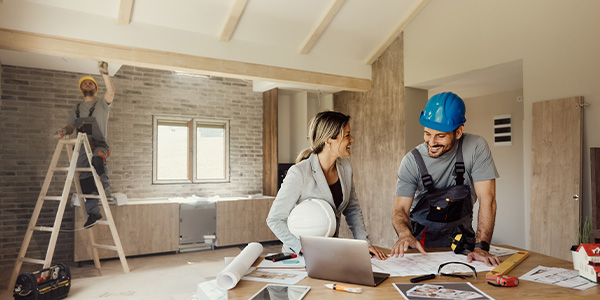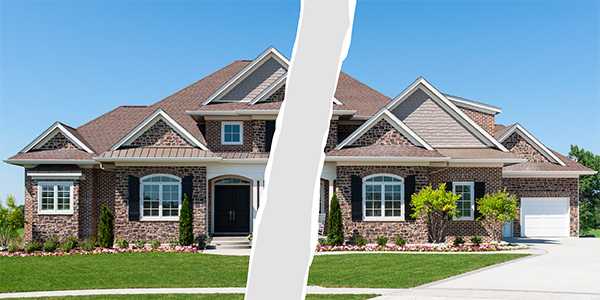Homeowners
Renovating in the Age of Tariffs: How Homeowners Can Save Money Now
April 17, 2025
For homeowners planning renovations this year, sticker shock might come not from the contractor’s quote—but from the materials list.
A new round of tariffs on imported goods is likely to drive up the price of everything from drywall to dishwashers. Tariffs are taxes on imported goods, which can raise the cost of these items. That’s translating into higher renovation costs.
But while prices may be rising, that doesn’t mean savings are off the table. In fact, smart planning and timely sourcing can make a significant difference. From alternative materials to better timing, homeowners have more control than they may think.
“For home shoppers, that home that needs ‘a little bit of work’ is going to be more expensive to improve,” said Elizabeth La Jeunesse, vice president of building products research at John Burns Research and Consulting.
For those embarking on mid-size remodeling projects, higher prices are showing up in contractor quotes, supply invoices, and even appliance showrooms.
Imported tile may now cost more than it did at the start of the year. Lumber prices, already volatile over the past three years, are trending upward again, according to the National Association of Home Builders.
Homeowners sourcing their own lighting, plumbing fixtures, and appliances may notice fewer promotions or longer lead times on orders.
However, there are ways that buyers and owners can still save money on materials. Here’s what you need to know about rising costs—and how to stay ahead of the tariff curve.
Seven ways to renovate smart in a tariff-heavy market

If you decide not to put your project on hold, you may want to be strategic with your remodel. Here are seven practical ways to stretch your renovation dollars, even as material costs rise.
1. Figure out the basics: Get a breakdown of materials before your project starts. If your contractor plans to use products sourced from overseas, ask if there’s a similar U.S.-made alternative. You might be surprised by how much is available domestically, often with shorter lead times.
2. Source American-made when possible: Products made in the U.S. aren’t subject to these tariffs—and many brands are stepping up with competitive options. In recent years, local suppliers have offered more products, including quartz countertops, lighting, and tile. This is partly because of previous tariff increases.
3. Buy now: If you’re just starting out on your project, it may be worth buying important materials now. This is especially true if suppliers are warning about future increases. Prices could climb again if tariffs expand or demand spikes, so locking in what you need can create some budget certainty.
4. Check for in-stock inventory: Larger retailers and local distributors sometimes stock inventory purchased before tariff hikes take effect. Look for overstock sales, discontinued styles, or warehouse clearance events. These can offer quality materials without the import price bump.
5. Consider alternative materials: Is imported marble or hardwood too costly? Engineered stone or wood can be a smart substitute. Instead of European tile, look for American porcelain or concrete-look ceramics. Ask your contractor or designer for side-by-side comparisons before deciding.
6. Work in stages: If you first planned to renovate the whole kitchen or two bathrooms at once, breaking the project into stages can help you save money. Start with structural or plumbing work and wait on finishes until pricing (or your budget) allows.
7. Get multiple bids: When comparing contractor bids, don’t just look at the total cost. Look at what brands and materials they’re quoting. One contractor may quote high-end imported fixtures, while another uses domestic equivalents. That difference alone could swing your budget by thousands.
Tapping home equity for your renovation

For homeowners watching renovation costs creep higher, funding the project can be a challenge.
Fortunately, rising home values in recent years mean many owners are sitting on untapped home equity, which can be a powerful tool.
Sometimes, the smart move isn’t delaying the project—it’s financing it wisely. Here are a few options:
- Home Equity Line of Credit (HELOC): A HELOC is like a credit card that uses your home as a security for a loan. You can draw funds as needed during what’s known as the “draw period.” This usually lasts around 10 years, and you typically only pay interest on the money you use during this period. After the draw period, you begin to repay the money you used.
- Home equity loan (aka second mortgage): This allows you to keep your current mortgage (and current mortgage rate). With a home equity loan, you borrow against your home equity, receive a lump sum up front, and make fixed monthly payments. It’s often best for one-time, high-cost upgrades like a kitchen remodel or roof replacement.
- Cash-out refinance: In this scenario, you turn some of the equity in your home into cash by replacing your current mortgage with a larger one. You then receive the difference in cash, which you can use for renovations or other expenses.






 Smart Moves Start Here.
Smart Moves Start Here.